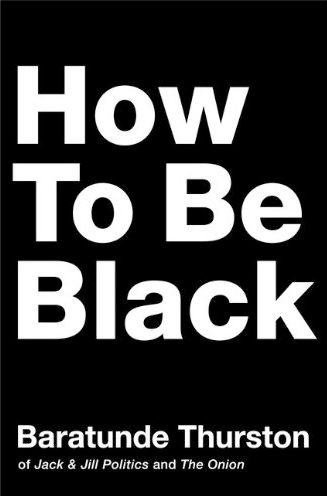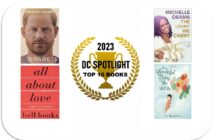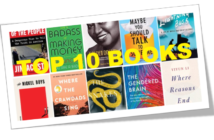March 1, 2012
By Miriam Laufer
News Writer
Books – Top 10 List
1. How to Be Black
by Baratunde Thurston, 2012
Baratunde Thurston, digital director of The Onion and co-founder of the blog Jack & Jill politics, explains how to be black, including how to perform such stereotypical roles as “The Black Friend” and “The Black Employee.” Thurston’s satire is an incisive, personal account of what it means to be black in our society and a great starting point for a conversation about African-American identity today.
2. The Baker’s Daughter
by Sarah McCoy, 2012
In twenty-first century Texas, Reba Adams, a young journalist, interviews Elsie Schmidt and her daughter Jane for a story on Christmas baking. However, Reba’s present dilemma over whether to marry her border patrol fiancé finds a more haunting parallel in Elsie’s past in Nazi Germany, as the two stories emerge side by side. Elsie’s recipes are featured at the end, a bonus to a thoroughly engrossing read.
3. The Swing Vote: The Untapped Power of Independents
by Linda Killian, 2012
Washington D.C. journalist Linda Killian investigates independent voters, particularly in swing states like New Hampshire, Ohio, Colorado, and Virginia. Her interviews suggest that the influential bloc of independent voters feels disconnected from the government and upset with increasing polarization in both political parties. An interesting take on the American political system, with implications for the 2012 election.
4. The Last Nude
by Ellis Avery, 2012
The model for Art Deco painter Tamara de Lempicka’s “Rafaela” paintings is brought to life in her own words. The fictionalized Rafaela Fano is a young American in 1920s Paris, whom Tamara rescues from prostitution. Avery exposes the dark flaws of the Lost Generation throughout this glittering snapshot of Rafaela and Tamara’s ill-fated love.
5. Revealing Eden (Save the Pearls Part One)
by Victoria Foyt, 2011
In a post-apocalyptic world where global warming has won, the “Pearls” or lighter-skinned humans are viewed as an inferior race due to their lack of resistance to UV rays, while the dark-skinned “Coals” are the ruling class. Eden Newman is approaching her 18th birthday, when she must either find a mate or die, a task more difficult since she is an undesirable Pearl. Victoria Foyt does credit to the growing trend of dystopian literature and grapples meaningfully with issues of love, race, and bio-ethics.
6. A Nation of Moochers
by Charles J. Sykes, 2012
Charles J. Sykes, a senior fellow at the Wisconsin Policy Research Institute and talk show host at WTMJ radio, argues that America has become a nation of moochers at the corporate and individual level. The entitlement to subsist on the labor of others, he believes, has outstripped the traditional American work ethic and contributed to the recent economic stagnation. He prescribes a return to the value of personal responsibility over reliance on government handouts.
7. The Odd Clauses: Understanding the Constitution through Ten of Its Most Curious Provisions
by Jay Wexler, 2011
A professor at the Boston University School of Law, Jay Wexler considers the less-explored clauses of the United States Constitution to provide a humorous and informative account of the U.S. legal system. Though he focuses on ten provisions, he references language from various other parts of the Constitution, including the better-known clauses and amendments.
8. Religion for Atheists
by Alain de Botton, Released March 6, 2012
Philosopher Alain de Botton wants to salvage the benefits of religion for nonbelievers. Unlike fellow atheists Richard Dawkins and the late Christopher Hitchens, Botton believes that religion does have some virtues, including services to care for the poor and elderly and places for communities to gather in solidarity. He outlines how atheists can gain from incorporating similar institutions into their lifestyles.
9. The Technologists
by Matthew Pearl, 2012
Matthew Pearl’s latest novel sets a series of mysterious incidents in nineteenth century Boston. M.I.T. student Marcus Mansfield and his classmates must defend the city from these catastrophes, which bring to light the battle of science and technology vs. Nature.
10. The Color of My Soul
by Melanie S. Hatter, 2011
This debut novel from Washington D.C. author Melanie S. Hatter follows Virginia reporter Kira Franklin as she covers a local Cherokee community, and is inspired to look into her own roots. However, Kira’s ancestry is more complicated than she knows and the answers she finds may not be ones she wants to hear.






1 Comment
Pingback: Welcome to my world! (Scroll down for the latest news.): Melanie S. Hatter